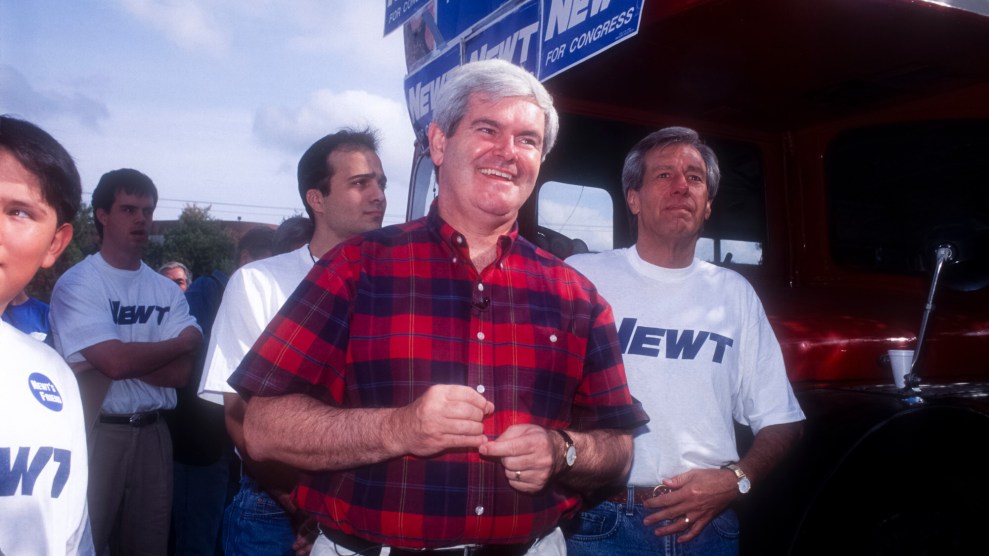
In June 1996, the New York Times Magazine ran a story by John Tierney titled “Recycling is Garbage.” In the now-infamous piece, Tierney argued that recycling was environmentally unnecessary, fiscally burdensome, and ideologically laughable. “Recycling,” he concluded, “may be the most wasteful activity in modern America.” Having provided comfort to millions of non-recyclers—particularly New Yorkers—. Tierney has since migrated to the paper’s Science Times section, where he writes a regular column, “Findings.” Despite the whiff of empiricism, the column is often a platform for his libertarian-tinged environmental skepticism.
Last week, Tierney struck again with a column listing “10 Things to Scratch From Your Worry List.” The article displayed the typical Tierney M.O.: Take an environmental or health issue and dismiss it with a less-than-thorough glance at the research.
His list wasn’t entirely off-base—shark attacks are incredibly rare, no matter what Shark Week teaches us. And it’s not really worth losing sleep over intergalactic wormholes or the potential collapse of the universe. But back on Earth, Tierney’s glib dismissal of some common environmental and health issues obscured the whole story. Seven things Tierney’s latest column fudged:
1. Hot dogs as health food
Tierney: Don’t worry about hot dogs being unhealthy, writes Tierney, because “a rigorous experiment in Israel” found that people with a diet high in saturated fat lost more weight and had better cholesterol profiles than those with a restricted diet.
Reality check: Aside from the chutzpah of using an Israeli study to justify eating frankfurters, Tierney’s explanation is hard to swallow. The study he cites was designed to measure the effectiveness and safety of various weight-loss diets. It was not designed to look at the effects of saturated fat in general or hot dogs in particular. Beyond that, Tierney says “Low-carb, unrestricted-calorie diet consumed more saturated fat than another group forced to cut back on both fat and calories, but those fatophiles lost more weight and ended up with a better cholesterol profile.” Not really, they had the most improved cholesterol profile. That’s a counterintuitive and interesting finding, but it hardly means that a diet of ballpark franks is a recipe for arterial health.
2. A/C OK!
Tierney: It’s okay to drive with your air conditioning blasting because “the mileage experts at edmunds.com” discovered that the drag from opening the windows undermines any fuel savings from turning off the air-conditioner.
Reality check: The Edmunds study wasn’t exactly the world’s most rigorous, since its tests were only performed at 65 mph, but Tierney’s right here. Leaving the windows open won’t save a lot of gas and the savings are so small (compared to the cost of running the car) that the overall environmental impact is minimal. But as a more thorough look at the question in Slate found, there are differences between vehicles: Sedans get worse mileage with the windows down, but blasting the AC makes SUVs’ crummy fuel efficiency even worse.
3. Eat globally, not locally
Tierney: Don’t worry about getting your food from abroad. Foreign food is often produced and shipped much more efficiently than domestic food. One study even showed that apples shipped from New Zealand to Britain had a smaller carbon footprint than apples grown and sold in Britain.
Reality check: Though the concept of measuring food miles is a little overrated (growing and harvesting food is responsible for 83 percent of greenhouse gases involved in food production; transportation produces 11 percent), the carbon footprint of food depends on the product in question. Yet Tierney implies that buying imported food is cost-free, even though the inefficient packaging of many American products doesn’t make foreign food any greener. If you want to reduce your food’s carbon footprint, the issue isn’t about which foreign country to buy your produce from; the issue is whether to buy out-of-season produce in the first place.
4. Cell phone hang-ups
Tierney: Don’t worry about cell phones causing cancer because his “colleague Tara Parker-Pope” wrote an article about how there is no known biological mechanism for the radiation from mobiles to cause cancer.
Reality check: Technically, he’s right. There is no established link between cell phones and brain cancer. But that’s not to say that cell phones are in the clear. Parker-Pope’s article also pointed out that most cell-phone studies are not very good and that light and heavy cell phone users may have different levels of cancer risk. And, she writes, “the fear is that even if the individual risk of using a cellphone is low, with three billion users worldwide, even a minuscule risk would translate into a major public health concern.” See our recent story, “This Is Your Brain on Cell Phones,” for more on why this issue is still up in the air.
5. That’s my bag
Tierney: Don’t fret about using plastic bags because “the Environmental Protection Agency” indicates that paper bags are not better for the environment than plastic bags, which require much less energy —and greenhouse emissions —to manufacture, ship and recycle.
Reality check: Tierney’s take on the agency’s stance is misleading. Actually, the EPA still thinks plastic bags are evil; it just doesn’t like paper bags, either. As its website says,”So, what is the answer, paper or plastic? NEITHER! Look into purchasing reusable bags or reusing your paper or plastic bags at the store.” Plastic bags do require less energy to produce; though the “ship and recycle” component of that statement is not clearly apparent in the article cited to support it.
6. Plastic’s fantastic
Tierney: Don’t worry about bisphenol-a, or BPA, which is used in polycarbonate plastic bottles such as Tierney’s trusty Nalgene. BPA, he writes, “could be harmful if given in huge doses to rodents, but so can the natural chemicals in countless foods we eat every day.”
Reality check: True, the evidence of BPA’s harm comes from animal studies and there is no evidence yet that BPA exposure is harmful to humans. But most human exposure to BPA occurs through the lining of food cans, not plastic bottles. Virtually all canned products, even organic ones, are lined with BPA. For more on the growing concern about what’s in plastics, see our story, “Hard to Break”.
7. Meltdown averted?
Tierney: The Arctic’s ice cap has not melted, as predicted, and there’s actually more ice at the North Pole this summer than last. “Most experts” are no longer expecting the ice cap to melt.
Reality check: Last year, climate scientists predicted that there was a greater than 50 percent chance that all the ice at the North Pole would melt this summer. Due to different weather patterns, the Arctic ice did not melt this summer—which is good news. Yet, as the article that Tierney cites explains, “all of the 15 teams offering projections say ice extent will remain well below the average for the last quarter century and a downward trend in summer ice around the North Pole has not abated.” Translation: The ice cap still could melt in the near future, which is still very bad news.
But even if the ice melts and sea levels rise, Tierney isn’t particularly worried about that, either. Following up on his “10 Things” column in his blog, he dismissed the global warming “catastrophists,” for making unrealistic claims. Plus, he wrote, “They’ve overlooked humans’ capacity to adapt —like building dikes.” Why worry, indeed? —Daniel Luzer
Photo: New York Times















